1 of 16
Download to read offline

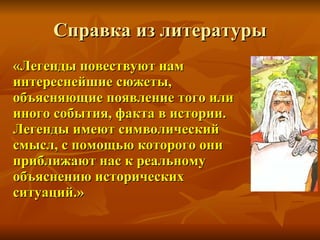


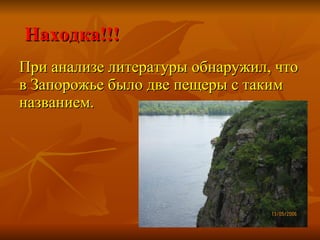
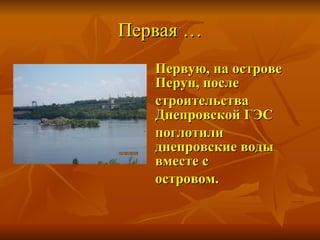
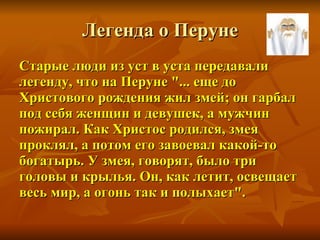
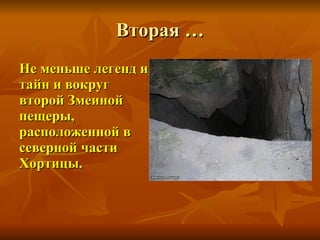

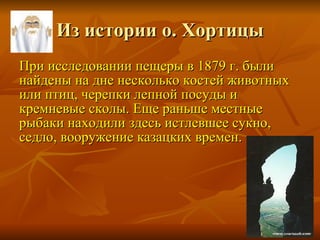
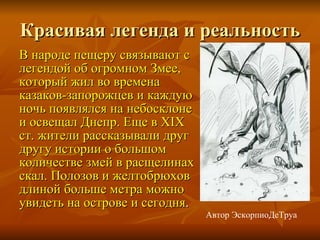
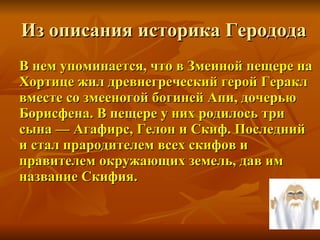
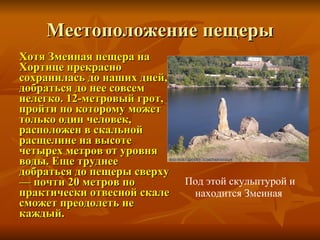
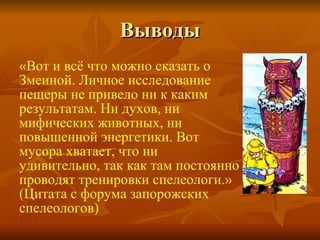
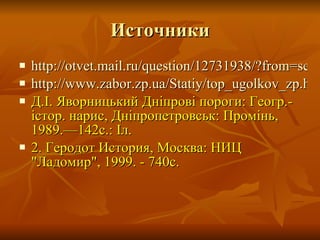

Ad
Recommended
RIW 2008: ąØąŠą▓ą░čÅ čĆąĄą░ą╗čīąĮąŠčüčéčī ą▒ąĄąĘąĮą░ą╗ąĖčćąĮčŗčģ ą┐ą╗ą░č鹥ąČąĄą╣ (ECASH)
RIW 2008: ąØąŠą▓ą░čÅ čĆąĄą░ą╗čīąĮąŠčüčéčī ą▒ąĄąĘąĮą░ą╗ąĖčćąĮčŗčģ ą┐ą╗ą░č鹥ąČąĄą╣ (ECASH)E-Money News
╠²
ąÉą╗ąĄą║čüą░ąĮą┤čĆ ąźą×ąĀą×ą©ąśąøą×ąÆ (ECASH)ąĀąśąż+ąÜąśąæ 2009: ąĢą┤ąĖąĮčŗą╣ ą║ąŠčłąĄą╗ąĄą║. ą¤čāčéčī ąĖąĘ ąĀąŠčüčüąĖąĖ ą▓ ą«ąÉąĀ (W1)
ąĀąśąż+ąÜąśąæ 2009: ąĢą┤ąĖąĮčŗą╣ ą║ąŠčłąĄą╗ąĄą║. ą¤čāčéčī ąĖąĘ ąĀąŠčüčüąĖąĖ ą▓ ą«ąÉąĀ (W1)E-Money News
╠²
ąÜąŠąĮčüčéą░ąĮčéąĖąĮ ą©ąśąøą×ąÆ (W1)ąØą░ čĆą░čüą┐čāčéčīąĄ
ąØą░ čĆą░čüą┐čāčéčīąĄgergelvalentina
╠²
ą¤čĆąĄąĘąĄąĮčéą░čåąĖčÅ čāčćąĖč鹥ą╗čÅ ą║ ą┐čĆąŠąĄą║čéčā "ąÜąĄą╝ čüčéą░čéčī?"ą£ąŠą╣ ąÜą░ą┐ąĖčéą░ąĮ
ą£ąŠą╣ ąÜą░ą┐ąĖčéą░ąĮFreekidstories
╠²
ąæąĄčüą┐ą╗ą░čéąĮčŗąĄ čĆą░čüčüą║ą░ąĘčŗ, ą║ąĮąĖą│ąĖ, 菹╗ąĄą║čéčĆąŠąĮąĮčŗąĄ ą║ąĮąĖą│ąĖ, ą▓ąĖą┤ąĄąŠ ąĖ čĆą░čüą║čĆą░čüą║ąĖ ą┤ą╗čÅ ą┤ąĄč鹥ą╣ - www.freekidstories.org
ąĀąśąż+ąÜąśąæ 2009: ąØą░ čüčéčŗą║ąĄ čĆąĄą░ą╗čīąĮąŠą│ąŠ ąĖ ą▓ąĖčĆčéčāą░ą╗čīąĮąŠą│ąŠ ą╝ąĖčĆąŠą▓ (ą¤ą╗ą░č鹥ąČ.RU)
ąĀąśąż+ąÜąśąæ 2009: ąØą░ čüčéčŗą║ąĄ čĆąĄą░ą╗čīąĮąŠą│ąŠ ąĖ ą▓ąĖčĆčéčāą░ą╗čīąĮąŠą│ąŠ ą╝ąĖčĆąŠą▓ (ą¤ą╗ą░č鹥ąČ.RU)E-Money News
╠²
ąÆą╗ą░ą┤ąĖą╝ąĖčĆ ąōąĀąÉąØąÜąśąØ (OKEAN BANK)Etarget2009 Shestakov
Etarget2009 ShestakovNikolay Shestakov
╠²
ą¤čĆąĄąĘąĄąĮčéą░čåąĖčÅ čü ąĢčéą░čĆą│ąĄčé 2009, 1 ą┤ąĄąĮčī. ą»ąĮą┤ąĄą║čü.ąöąĖčĆąĄą║čé: ąØąŠą▓čŗąĄ ą▓ąŠąĘą╝ąŠąČąĮąŠčüčéąĖ ą┤ą╗čÅ ąĮąŠą▓čŗčģ čāčüą╗ąŠą▓ąĖą╣ čĆčŗąĮą║ą░č鹥ąĘąĖčüčŗ ą║ą░ą│ą░ąĮąŠą▓ą░ ąĖčüčüą╗ąĄą┤ąŠą▓ą░ąĮąĖąĄ_čłą║ąŠą╗čīąĮčŗčģ_ą┐čĆąŠą│čĆą░ą╝ą╝_ą┐ąŠ_ą╗ąĖč鹥čĆą░čéčāčĆąĄ
č鹥ąĘąĖčüčŗ ą║ą░ą│ą░ąĮąŠą▓ą░ ąĖčüčüą╗ąĄą┤ąŠą▓ą░ąĮąĖąĄ_čłą║ąŠą╗čīąĮčŗčģ_ą┐čĆąŠą│čĆą░ą╝ą╝_ą┐ąŠ_ą╗ąĖč鹥čĆą░čéčāčĆąĄąØą░čéą░ą╗čīčÅ ąóą░čĆą░čüąŠą▓ą░
╠²
ąźą£ąÉą× - "ą¤ąŠčĆčéą░ą╗
ą│ąŠčüčāą┤ą░čĆčüčéą▓ąĄąĮąĮčŗčģ ąĖ ą╝čāąĮąĖčåąĖą┐ą░ą╗čīąĮčŗčģ čāčüą╗čāą│ ŌĆō čĆąĄą│ąĖąŠąĮą░ą╗čīąĮčŗą╣ ą║ąŠą╝ą┐ąŠąĮąĄ...
ąźą£ąÉą× - "ą¤ąŠčĆčéą░ą╗
ą│ąŠčüčāą┤ą░čĆčüčéą▓ąĄąĮąĮčŗčģ ąĖ ą╝čāąĮąĖčåąĖą┐ą░ą╗čīąĮčŗčģ čāčüą╗čāą│ ŌĆō čĆąĄą│ąĖąŠąĮą░ą╗čīąĮčŗą╣ ą║ąŠą╝ą┐ąŠąĮąĄ...Victor Gridnev
╠²
ąźą£ąÉą× - "ą¤ąŠčĆčéą░ą╗
ą│ąŠčüčāą┤ą░čĆčüčéą▓ąĄąĮąĮčŗčģ ąĖ ą╝čāąĮąĖčåąĖą┐ą░ą╗čīąĮčŗčģ čāčüą╗čāą│ ŌĆō čĆąĄą│ąĖąŠąĮą░ą╗čīąĮčŗą╣ ą║ąŠą╝ą┐ąŠąĮąĄąĮčé ą║ą░ą║ čćą░čüčéčī ąĄą┤ąĖąĮąŠą╣ čüąĖčüč鹥ą╝čŗ ąŠą▒čüą╗čāąČąĖą▓ą░ąĮąĖčÅ ąĮą░čüąĄą╗ąĄąĮąĖčÅ"RIW 2008: ąĀčŗąĮąŠą║ 菹╗ąĄą║čéčĆąŠąĮąĮčŗčģ ą┐ą╗ą░č鹥ąČąĄą╣ 2008-2009
RIW 2008: ąĀčŗąĮąŠą║ 菹╗ąĄą║čéčĆąŠąĮąĮčŗčģ ą┐ą╗ą░č鹥ąČąĄą╣ 2008-2009E-Money News
╠²
ąØą░ąĖą╗čÅ ąŚąÉą£ąÉą©ąÜąśąØąÉ (MoneyMail)Adaptive Frameworks
Adaptive Frameworksdarilyn
╠²
Adaptive Frameworks is a top training provider in project management methodologies like PRINCE2 and MSP, with a focus on delivering tailored, effective solutions for clients in both public and private sectors. The company emphasizes strong relationships with clients and employs a knowledgeable team committed to exceeding expectations through creative implementation of best practices. Their approach includes understanding client objectives, involving stakeholders, and ensuring continuous knowledge transfer to guarantee satisfaction.Nanotech Standards - Industry Participation - Strengthening Ties
Nanotech Standards - Industry Participation - Strengthening Tiesharidoss
╠²
This document discusses standards development for nanotechnology. It outlines how standards were developed anticipatorily, participatorily, and responsively for various industries like microelectronics, information technology, and digital optical storage. It recommends high priority collaborative projects between standards bodies in areas like clean rooms and environmental products. It also recommends continued knowledge assessment, open access archives, standards education, and engagement of international communities and start-ups. The purpose is to demonstrate stewardship, develop performance standards for beneficial products, and kick start sensor applications to help nanoelectronics standards development.More Related Content
What's hot (20)
ą£ąŠą╣ ąÜą░ą┐ąĖčéą░ąĮ
ą£ąŠą╣ ąÜą░ą┐ąĖčéą░ąĮFreekidstories
╠²
ąæąĄčüą┐ą╗ą░čéąĮčŗąĄ čĆą░čüčüą║ą░ąĘčŗ, ą║ąĮąĖą│ąĖ, 菹╗ąĄą║čéčĆąŠąĮąĮčŗąĄ ą║ąĮąĖą│ąĖ, ą▓ąĖą┤ąĄąŠ ąĖ čĆą░čüą║čĆą░čüą║ąĖ ą┤ą╗čÅ ą┤ąĄč鹥ą╣ - www.freekidstories.org
ąĀąśąż+ąÜąśąæ 2009: ąØą░ čüčéčŗą║ąĄ čĆąĄą░ą╗čīąĮąŠą│ąŠ ąĖ ą▓ąĖčĆčéčāą░ą╗čīąĮąŠą│ąŠ ą╝ąĖčĆąŠą▓ (ą¤ą╗ą░č鹥ąČ.RU)
ąĀąśąż+ąÜąśąæ 2009: ąØą░ čüčéčŗą║ąĄ čĆąĄą░ą╗čīąĮąŠą│ąŠ ąĖ ą▓ąĖčĆčéčāą░ą╗čīąĮąŠą│ąŠ ą╝ąĖčĆąŠą▓ (ą¤ą╗ą░č鹥ąČ.RU)E-Money News
╠²
ąÆą╗ą░ą┤ąĖą╝ąĖčĆ ąōąĀąÉąØąÜąśąØ (OKEAN BANK)Etarget2009 Shestakov
Etarget2009 ShestakovNikolay Shestakov
╠²
ą¤čĆąĄąĘąĄąĮčéą░čåąĖčÅ čü ąĢčéą░čĆą│ąĄčé 2009, 1 ą┤ąĄąĮčī. ą»ąĮą┤ąĄą║čü.ąöąĖčĆąĄą║čé: ąØąŠą▓čŗąĄ ą▓ąŠąĘą╝ąŠąČąĮąŠčüčéąĖ ą┤ą╗čÅ ąĮąŠą▓čŗčģ čāčüą╗ąŠą▓ąĖą╣ čĆčŗąĮą║ą░č鹥ąĘąĖčüčŗ ą║ą░ą│ą░ąĮąŠą▓ą░ ąĖčüčüą╗ąĄą┤ąŠą▓ą░ąĮąĖąĄ_čłą║ąŠą╗čīąĮčŗčģ_ą┐čĆąŠą│čĆą░ą╝ą╝_ą┐ąŠ_ą╗ąĖč鹥čĆą░čéčāčĆąĄ
č鹥ąĘąĖčüčŗ ą║ą░ą│ą░ąĮąŠą▓ą░ ąĖčüčüą╗ąĄą┤ąŠą▓ą░ąĮąĖąĄ_čłą║ąŠą╗čīąĮčŗčģ_ą┐čĆąŠą│čĆą░ą╝ą╝_ą┐ąŠ_ą╗ąĖč鹥čĆą░čéčāčĆąĄąØą░čéą░ą╗čīčÅ ąóą░čĆą░čüąŠą▓ą░
╠²
ąźą£ąÉą× - "ą¤ąŠčĆčéą░ą╗
ą│ąŠčüčāą┤ą░čĆčüčéą▓ąĄąĮąĮčŗčģ ąĖ ą╝čāąĮąĖčåąĖą┐ą░ą╗čīąĮčŗčģ čāčüą╗čāą│ ŌĆō čĆąĄą│ąĖąŠąĮą░ą╗čīąĮčŗą╣ ą║ąŠą╝ą┐ąŠąĮąĄ...
ąźą£ąÉą× - "ą¤ąŠčĆčéą░ą╗
ą│ąŠčüčāą┤ą░čĆčüčéą▓ąĄąĮąĮčŗčģ ąĖ ą╝čāąĮąĖčåąĖą┐ą░ą╗čīąĮčŗčģ čāčüą╗čāą│ ŌĆō čĆąĄą│ąĖąŠąĮą░ą╗čīąĮčŗą╣ ą║ąŠą╝ą┐ąŠąĮąĄ...Victor Gridnev
╠²
ąźą£ąÉą× - "ą¤ąŠčĆčéą░ą╗
ą│ąŠčüčāą┤ą░čĆčüčéą▓ąĄąĮąĮčŗčģ ąĖ ą╝čāąĮąĖčåąĖą┐ą░ą╗čīąĮčŗčģ čāčüą╗čāą│ ŌĆō čĆąĄą│ąĖąŠąĮą░ą╗čīąĮčŗą╣ ą║ąŠą╝ą┐ąŠąĮąĄąĮčé ą║ą░ą║ čćą░čüčéčī ąĄą┤ąĖąĮąŠą╣ čüąĖčüč鹥ą╝čŗ ąŠą▒čüą╗čāąČąĖą▓ą░ąĮąĖčÅ ąĮą░čüąĄą╗ąĄąĮąĖčÅ"RIW 2008: ąĀčŗąĮąŠą║ 菹╗ąĄą║čéčĆąŠąĮąĮčŗčģ ą┐ą╗ą░č鹥ąČąĄą╣ 2008-2009
RIW 2008: ąĀčŗąĮąŠą║ 菹╗ąĄą║čéčĆąŠąĮąĮčŗčģ ą┐ą╗ą░č鹥ąČąĄą╣ 2008-2009E-Money News
╠²
ąØą░ąĖą╗čÅ ąŚąÉą£ąÉą©ąÜąśąØąÉ (MoneyMail)ąĀąśąż+ąÜąśąæ 2009: ąØą░ čüčéčŗą║ąĄ čĆąĄą░ą╗čīąĮąŠą│ąŠ ąĖ ą▓ąĖčĆčéčāą░ą╗čīąĮąŠą│ąŠ ą╝ąĖčĆąŠą▓ (ą¤ą╗ą░č鹥ąČ.RU)
ąĀąśąż+ąÜąśąæ 2009: ąØą░ čüčéčŗą║ąĄ čĆąĄą░ą╗čīąĮąŠą│ąŠ ąĖ ą▓ąĖčĆčéčāą░ą╗čīąĮąŠą│ąŠ ą╝ąĖčĆąŠą▓ (ą¤ą╗ą░č鹥ąČ.RU)E-Money News
╠²
č鹥ąĘąĖčüčŗ ą║ą░ą│ą░ąĮąŠą▓ą░ ąĖčüčüą╗ąĄą┤ąŠą▓ą░ąĮąĖąĄ_čłą║ąŠą╗čīąĮčŗčģ_ą┐čĆąŠą│čĆą░ą╝ą╝_ą┐ąŠ_ą╗ąĖč鹥čĆą░čéčāčĆąĄ
č鹥ąĘąĖčüčŗ ą║ą░ą│ą░ąĮąŠą▓ą░ ąĖčüčüą╗ąĄą┤ąŠą▓ą░ąĮąĖąĄ_čłą║ąŠą╗čīąĮčŗčģ_ą┐čĆąŠą│čĆą░ą╝ą╝_ą┐ąŠ_ą╗ąĖč鹥čĆą░čéčāčĆąĄąØą░čéą░ą╗čīčÅ ąóą░čĆą░čüąŠą▓ą░
╠²
ąźą£ąÉą× - "ą¤ąŠčĆčéą░ą╗
ą│ąŠčüčāą┤ą░čĆčüčéą▓ąĄąĮąĮčŗčģ ąĖ ą╝čāąĮąĖčåąĖą┐ą░ą╗čīąĮčŗčģ čāčüą╗čāą│ ŌĆō čĆąĄą│ąĖąŠąĮą░ą╗čīąĮčŗą╣ ą║ąŠą╝ą┐ąŠąĮąĄ...
ąźą£ąÉą× - "ą¤ąŠčĆčéą░ą╗
ą│ąŠčüčāą┤ą░čĆčüčéą▓ąĄąĮąĮčŗčģ ąĖ ą╝čāąĮąĖčåąĖą┐ą░ą╗čīąĮčŗčģ čāčüą╗čāą│ ŌĆō čĆąĄą│ąĖąŠąĮą░ą╗čīąĮčŗą╣ ą║ąŠą╝ą┐ąŠąĮąĄ...Victor Gridnev
╠²
Viewers also liked (15)
Adaptive Frameworks
Adaptive Frameworksdarilyn
╠²
Adaptive Frameworks is a top training provider in project management methodologies like PRINCE2 and MSP, with a focus on delivering tailored, effective solutions for clients in both public and private sectors. The company emphasizes strong relationships with clients and employs a knowledgeable team committed to exceeding expectations through creative implementation of best practices. Their approach includes understanding client objectives, involving stakeholders, and ensuring continuous knowledge transfer to guarantee satisfaction.Nanotech Standards - Industry Participation - Strengthening Ties
Nanotech Standards - Industry Participation - Strengthening Tiesharidoss
╠²
This document discusses standards development for nanotechnology. It outlines how standards were developed anticipatorily, participatorily, and responsively for various industries like microelectronics, information technology, and digital optical storage. It recommends high priority collaborative projects between standards bodies in areas like clean rooms and environmental products. It also recommends continued knowledge assessment, open access archives, standards education, and engagement of international communities and start-ups. The purpose is to demonstrate stewardship, develop performance standards for beneficial products, and kick start sensor applications to help nanoelectronics standards development.Kriya Consulting
Kriya Consultingharidoss
╠²
Kriya Consulting provides practical solutions to help businesses grow. It focuses on internal controllable factors like resource alignment, targets, and solutions. It also considers external uncontrollable factors like competition and customer needs, as well as external controllable factors like technologies and regulations. Kriya uses an ecosystem and integrated service framework to facilitate decisions, integrate options, generate value information, and connect people. This helps address customer needs in areas like new product development, intellectual property, technology evaluation, and training. Kriya's approach creates structures and processes to bridge the gap between ideas and reality. Sample projects include skills and resource development for new products, patent portfolio development, market analysis, and technology alternatives evaluations.ąóąĄčüčé ą┐čĆąĄąĘąĄąĮčéą░čåąĖą╣
ąóąĄčüčé ą┐čĆąĄąĘąĄąĮčéą░čåąĖą╣Alex Tolkien
╠²
The document discusses nature, cities, and various data points. It describes the countryside as murky, smoky and unpleasant, while nature is described as vast, airy and quiet. It states that John Snow knows nothing and provides viewership data for the first season of Fargo. It concludes with instructions to vary time.Sin Festivalposters 2008
Sin Festivalposters 2008Reinier Hamel
╠²
Haganum Festival is a spoken word festival held in Groningen on September 7-30, 2007. Tickets cost Ōé¼7.50 with discounts available for students and groups. The festival featured performances, workshops, and discussions around poetry, storytelling, and music.Ckc
CkcAlex Tolkien
╠²
ąöąŠą║čāą╝ąĄąĮčé ąŠą┐ąĖčüčŗą▓ą░ąĄčé čüčéčĆčāą║čéčāčĆąĖčĆąŠą▓ą░ąĮąĮčāčÄ ą║ą░ą▒ąĄą╗čīąĮčāčÄ čüąĖčüč鹥ą╝čā (ąĪąÜąĪ) ą║ą░ą║ ąŠčüąĮąŠą▓čā ąĖąĮčäčĆą░čüčéčĆčāą║čéčāčĆčŗ ąĘą┤ą░ąĮąĖčÅ, ąŠą▒čŖąĄą┤ąĖąĮčÅčÄčēčāčÄ čĆą░ąĘą╗ąĖčćąĮčŗąĄ čüąĄč鹥ą▓čŗąĄ ąĖąĮč乊čĆą╝ą░čåąĖąŠąĮąĮčŗąĄ čüąĄčĆą▓ąĖčüčŗ, ą▓ą║ą╗čÄčćą░čÅ čüąĖčüč鹥ą╝čŗ ą▓ąĖą┤ąĄąŠąĮą░ą▒ą╗čÄą┤ąĄąĮąĖčÅ ąĖ ą▒ąĄąĘąŠą┐ą░čüąĮąŠčüčéąĖ. ą¤čĆąĖą▓ąĄą┤ąĄąĮčŗ ąŠčüąĮąŠą▓ąĮčŗąĄ ą┐čĆą░ą▓ąĖą╗ą░ ą╝ąŠąĮčéą░ąČą░ ą▓ąĖč鹊ą╣ ą┐ą░čĆčŗ, čéą░ą║ąĖąĄ ą║ą░ą║ čĆą░ą┤ąĖčāčü ąĖąĘą│ąĖą▒ą░ ąĖ ą╝ą░ą║čüąĖą╝ą░ą╗čīąĮą░čÅ čüąĖą╗ą░ ąĮą░čéčÅąČąĄąĮąĖčÅ. ąóą░ą║ąČąĄ čāą┐ąŠą╝ąĖąĮą░čÄčéčüčÅ čéčĆąĄą▒ąŠą▓ą░ąĮąĖčÅ ą║ ą┐čĆąŠą║ą╗ą░ą┤ą║ąĄ ąŠą┐čéąĖč湥čüą║ąŠą│ąŠ ą║ą░ą▒ąĄą╗čÅ.ą▒ąĄąĘąŠą┐ą░čüąĮčŗą╣ ąĖąĮč鹥čĆąĮąĄčé. čüą║ą░ąĘą║ą░
ą▒ąĄąĘąŠą┐ą░čüąĮčŗą╣ ąĖąĮč鹥čĆąĮąĄčé. čüą║ą░ąĘą║ą░Alex Tolkien
╠²
ąöąŠą║čāą╝ąĄąĮčé ą┐čĆąĄą┤ąŠčüčéą░ą▓ą╗čÅąĄčé čĆąĄą║ąŠą╝ąĄąĮą┤ą░čåąĖąĖ ą┐ąŠ ą▒ąĄąĘąŠą┐ą░čüąĮąŠą╝čā ąĖčüą┐ąŠą╗čīąĘąŠą▓ą░ąĮąĖčÄ ąĖąĮč鹥čĆąĮąĄčéą░ ąĖ ą╝ąĄą┤ąĖą░ąŠą▒čĆą░ąĘąŠą▓ą░ąĮąĖčÄ. ą×ąĮ ą▓ą║ą╗čÄčćą░ąĄčé čüąŠą▓ąĄčéčŗ, čéą░ą║ąĖąĄ ą║ą░ą║ čüąŠą▒ą╗čÄą┤ąĄąĮąĖąĄ ą║ąŠąĮčäąĖą┤ąĄąĮčåąĖą░ą╗čīąĮąŠčüčéąĖ, ąĖąĘą▒ąĄą│ą░ąĮąĖąĄ ą┐ąŠą┤ąŠąĘčĆąĖč鹥ą╗čīąĮčŗčģ čüą░ą╣č鹊ą▓ ąĖ čāčćą░čüčéąĖąĄ ą▓ ąŠą▒čāčćą░čÄčēąĖčģ ą┐čĆąŠąĄą║čéą░čģ. ą×čüąĮąŠą▓ąĮą░čÅ čåąĄą╗čī - čüąŠąĘą┤ą░ąĮąĖąĄ ą╝ąĄą┤ąĖą░ą║čāą╗čīčéčāčĆčŗ ą║ą░ą║ ą╝ąĄčĆčŗ ą┐čĆąŠčéąĖą▓ 菹║čĆą░ąĮąĮąŠą│ąŠ ąĮą░čüąĖą╗ąĖčÅ.Ckc
CkcAlex Tolkien
╠²
ąöąŠą║čāą╝ąĄąĮčé ąŠą┐ąĖčüčŗą▓ą░ąĄčé čüčéčĆčāą║čéčāčĆąĖčĆąŠą▓ą░ąĮąĮčāčÄ ą║ą░ą▒ąĄą╗čīąĮčāčÄ čüąĖčüč鹥ą╝čā (ąĪąÜąĪ) ą║ą░ą║ čäąĖąĘąĖč湥čüą║čāčÄ ąŠčüąĮąŠą▓čā ą┤ą╗čÅ ąĖąĮč鹥ą│čĆą░čåąĖąĖ čĆą░ąĘą╗ąĖčćąĮčŗčģ čüąĄč鹥ą▓čŗčģ ąĖąĮč乊čĆą╝ą░čåąĖąŠąĮąĮčŗčģ čüąĄčĆą▓ąĖčüąŠą▓ ą▓ ąĘą┤ą░ąĮąĖąĖ. ą¤čĆąĖą▓ąĄą┤ąĄąĮčŗ ąŠčüąĮąŠą▓ąĮčŗąĄ ą┐čĆą░ą▓ąĖą╗ą░ ą╝ąŠąĮčéą░ąČą░ ą▓ąĖč鹊ą╣ ą┐ą░čĆčŗ ąĖ ą┐ą░čĆą░ą╝ąĄčéčĆčŗ ą┐čĆąŠą║ą╗ą░ą┤ą║ąĖ ąŠą┐čéąĖč湥čüą║ąŠą│ąŠ ą║ą░ą▒ąĄą╗čÅ. ą×ą┐ąĖčüą░ąĮčŗ čéčĆąĄą▒ąŠą▓ą░ąĮąĖčÅ ą║ ą║ą░č湥čüčéą▓čā ąĪąÜąĪ ąĖ ąĮąĄąŠą▒čģąŠą┤ąĖą╝čŗą╝ čāčüą╗ąŠą▓ąĖčÅą╝ ą┤ą╗čÅ ąĄčæ čŹčäč乥ą║čéąĖą▓ąĮąŠą│ąŠ ąĖčüą┐ąŠą╗čīąĘąŠą▓ą░ąĮąĖčÅ.Industry University R&D Alliance
Industry University R&D Allianceharidoss
╠²
The document provides suggestions for forming successful research alliances between academia and industry to work on "wicked problems". It recommends that the alliance have a shared purpose and activity, commit resources, and interact at different levels. It also notes the differing missions and values between university research and industry applied research that need to be balanced. Case studies from both industry and academia perspectives are presented.Sarma The Value Of Standards
Sarma The Value Of Standardsharidoss
╠²
The document discusses the value of standards and provides examples from different industries on how standards were developed and implemented following a product value chain. It argues that the nanoelectronics industry can develop anticipatory standards by following the examples set in the microelectronics, information technology, and digital optical storage industries. This will help integrate product and market players, ensure safety, and foster stewardship across the product life cycle.Ag Hwy Trans Emerg02 02 08 Av4
Ag Hwy Trans Emerg02 02 08 Av4bgsuvinc
╠²
Agricultural vehicles are frequently involved in highway accidents. Over 15,000 accidents occur annually, with 90% taking place in daylight on dry roads. Sixty-six percent involve farm machinery being rear-ended by automobiles. These accidents result in over $142 million in damages annually. As urban sprawl increases, the likelihood of accidents between farm vehicles and other vehicles on roadways also increases. This document outlines emergency response procedures for agricultural producers to follow in the event of highway accidents or spills involving farm machinery and vehicles.Life Cycle Assessment Of Polymers And Compounds
Life Cycle Assessment Of Polymers And Compoundsharidoss
╠²
This document discusses a presentation on life cycle assessment (LCA) of polymers and compounds for wire and cable. It covers LCA frameworks, base polymers used in cables, and recent LCA studies of various cable materials and systems. LCA looks at the environmental impacts of products across their lifecycles from material sourcing through end of life. The presentation examines using LCA to evaluate impacts of lead-containing versus lead-free cables and how electricity use contributes most to impacts of lead-free cables. It also summarizes LCAs of different cable systems and power lines that found production stage impacts to be most significant. The document concludes with opportunities to further develop LCA methods and models for wire and cable applications.ąĀŠ▒čłąĄąĮąĮčÅ│Õčüčāą┤čā│ÕąĘą░│Õą┐ąŠąĘąŠą▓ąŠą╝│Õą¤ą░čłą║ąŠą▓ą░│ÕąÆ.ąÆ.│Õą┤ąŠ│ÕąÉčĆčéčÄčłąĄąĮą║ą░│Õ▒§.ąÉ.│Õą┐čĆąŠ│ÕąĘą░čģąĖčüčé│Õą│Š▒ą┤ąĮąŠčüčéŠ▒│Õčéą░...
ąĀŠ▒čłąĄąĮąĮčÅ│Õčüčāą┤čā│ÕąĘą░│Õą┐ąŠąĘąŠą▓ąŠą╝│Õą¤ą░čłą║ąŠą▓ą░│ÕąÆ.ąÆ.│Õą┤ąŠ│ÕąÉčĆčéčÄčłąĄąĮą║ą░│Õ▒§.ąÉ.│Õą┐čĆąŠ│ÕąĘą░čģąĖčüčé│Õą│Š▒ą┤ąĮąŠčüčéŠ▒│Õčéą░...Alex Tolkien
╠²
ąĀičłąĄąĮąĮčÅ čüčāą┤čā ąĘą░ ą┐ąŠąĘąŠą▓ąŠą╝ ą¤ą░čłą║ąŠą▓ą░ ąÆ.ąÆ. ą┤ąŠ ąÉčĆčéčÄčłąĄąĮą║ą░ I.ąÉ. ą┐čĆąŠ ąĘą░čģąĖčüčé ą│ią┤ąĮąŠčüčéi čéą░ č湥čüčéiąĀŠ▒čłąĄąĮąĮčÅ│Õčüčāą┤čā│ÕąĘą░│Õą┐ąŠąĘąŠą▓ąŠą╝│Õą¤ą░čłą║ąŠą▓ą░│ÕąÆ.ąÆ.│Õą┤ąŠ│ÕąÉčĆčéčÄčłąĄąĮą║ą░│Õ▒§.ąÉ.│Õą┐čĆąŠ│ÕąĘą░čģąĖčüčé│Õą│Š▒ą┤ąĮąŠčüčéŠ▒│Õčéą░...
ąĀŠ▒čłąĄąĮąĮčÅ│Õčüčāą┤čā│ÕąĘą░│Õą┐ąŠąĘąŠą▓ąŠą╝│Õą¤ą░čłą║ąŠą▓ą░│ÕąÆ.ąÆ.│Õą┤ąŠ│ÕąÉčĆčéčÄčłąĄąĮą║ą░│Õ▒§.ąÉ.│Õą┐čĆąŠ│ÕąĘą░čģąĖčüčé│Õą│Š▒ą┤ąĮąŠčüčéŠ▒│Õčéą░...Alex Tolkien
╠²
Ad
